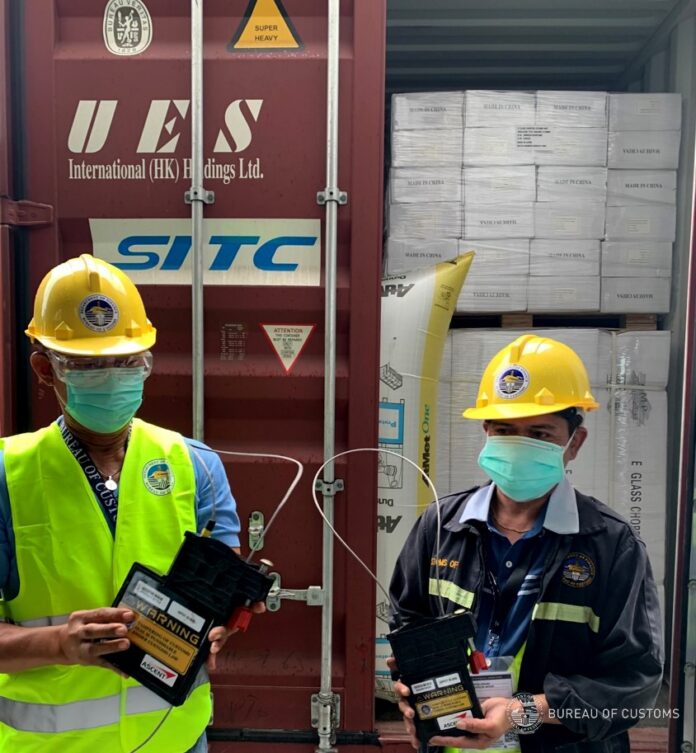- Import containers bound for 14 zones under the Philippine Economic Zone Authority in Laguna and Cavite now covered by the Bureau of Customs’ Electronic Tracking of Containerized Cargo (E-TRACC) System
- Containers discharged from seaports covered by the transit single administrative document to 14 economic zones must be equipped with an electronic customs seal starting Jan 19
Import containers bound for 14 zones under the Philippine Economic Zone Authority (PEZA) in Laguna and Cavite are now covered by the Bureau of Customs’ (BOC) Electronic Tracking of Containerized Cargo (E-TRACC) System.
Containers discharged from seaports covered by the transit single administrative document to the 14 economic zones must be equipped with an electronic customs seal (ECS) starting January 19, according to Assessment and Operations Coordinating Group (AOCG) Memo No. 30-2021 dated January 19.
These economic zones are:
- Carmelry Industrial Park I & II
- Calamba Permier International Park
- Light and Industry Science Park I & II
- Laguna International Industrial Park
- Filinvest Technology Park
- Toyota Sta. Rosa Special Economic Zone
- Greenfield Automotive Park
- First Cavite Industrial Estate
- Golden Mile Business Park
- Golden Gate Industrial Park
- Peoples Technology Complex
- Suntrust Ecotown Plaza – Special Economic Zone
- Daiichi Industrial Park
- EDS Manufacturing, Inc.
Under AOCG Memo 30-2021, the covered import containers must adhere to the amended guidelines for PEZA imports issued September 11, 2020 and Customs Memorandum Order (CMO) No. 04-2020, which establishes the E-TRACC System.
READ: BOC orders e-tracking of cargoes in transit
E-TRACC, which was launched last May, is a web-based system that tracks the inland movement of containerized cargoes during transit and transfer to other customs territories and facilities. It allows BOC to track, monitor, and audit the location and condition of cargoes, as well as obtain real-time alarms on diversion and tampering of cargoes.
Stakeholders are required to self-register to the E-TRACC System at www.ecms.ph. Stakeholders may also contact the service provider, Ascent Solutions Philippines, Inc.
Last year, BOC started implementing E-TRACC for all containers—except those containing electronic materials—discharged from the Port of Manila, Manila International Container Port (MICP), and Port of Batangas and bound for Laguna Technopark, Inc. It also covers all import containers from the ports of Manila and Batangas and bound for Cavite Economic Zone II (CEZ II).
The E-TRACC is also already implemented in Davao and Mariveles, Bataan.
Under CMO 04-2020, an ECS is required during the transfer of cargo to a container yard/container freight station (CY/CFS) or other CFWs; transit of cargo bound for Free Zones, inland customs office, depots, or terminals; transit to customs bonded warehouses (CBW); export of cargo from Free Zones, inland customs office, depots or terminals, and CBWs to port of loading; and transfer of shipments subject to further verification and/or monitoring.
All container vans covered by CMO 04-2020 should be affixed with an ECS before being cleared to depart from the starting point or point of discharge for the voyage to the end point or point of destination.
Except when warranted under CMO 04-2020, full completion of customs cargo clearance is mandatory before any shipment is sealed with an ECS.
Booking for an E-TRACC trip can be made one day earlier or up to one hour before departure of the container.
E-TRACC requires payment of P500 within a 10-kilometer (km) radius from port of discharge and P700 beyond the 10-km radius from port of discharge. The charge covers both arming and disarming of the ECS. – Roumina Pablo





